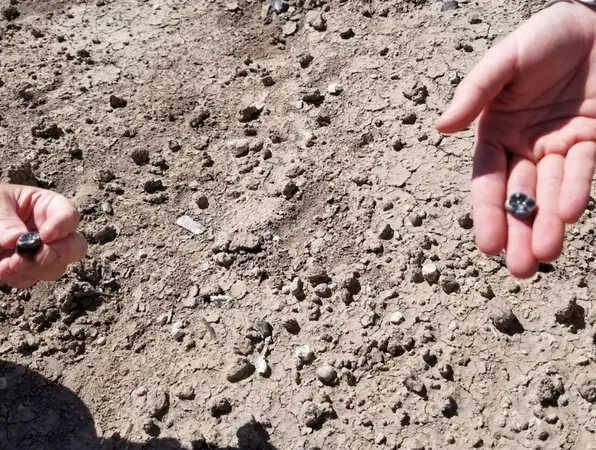
Groundbreaking Discovery in Ethiopia: New Species Found in Human Evolution
2025-08-24
Author: Ming
Unveiling a New Chapter in Human Evolution
A remarkable discovery in Ethiopia has unveiled tooth fossils, approximately 2.65 million years old, representing a previously unknown species in the human evolutionary lineage. This groundbreaking find emerged from the Ledi-Geraru research area in northeastern Ethiopia's Afar Region, where researchers unearthed ten teeth, indicating the existence of a new Australopithecus species.
Astonishing Fossil Findings
The team identified six molars, two incisors, one premolar, and one canine belonging to two individuals. This new discovery adds to the list of Australopithecus species, which until now consisted of six members – a crucial group of early human ancestors showcasing both ape-like and human-like traits.
Understanding Our Ancestors
By comparing these new teeth with existing Australopithecus fossils, researchers assert that these remains belong to a seventh species. Not only that, but they also discovered additional teeth dating back 2.59 million years, demonstrating the existence of the earliest known Homo species, correlating to a jawbone unearthed in the same area in 2013.
Coexistence and Competition in Early Human History
The close dating of these fossils raises intriguing questions about the coexistence of the newly identified Australopithecus species with early Homo species. Scientists are investigating whether these different hominins competed for the same resources in their environment. Current research includes analyzing the teeth to understand their dietary habits, which could reveal insights into their interactions.
A Rich Ecosystem of Ancient Life
The Afar Region, known as one of Earth's hottest places, was once a lush landscape teeming with life. During the time these species existed, rivers flowed across verdant terrains, creating an ecosystem filled with various animals, including giraffes, elephants, and predators like saber-toothed cats.
The Complex Tree of Human Evolution
“This discovery reinforces that human evolution is not a simple, linear progression,” explains Brian Villmoare, lead author of the research. “Rather, it showcases a branching tree of life, with multiple species coexisting and evolving simultaneously.”
Further Research on Interactions
As fossil analysis continues, researchers are exploring the dynamics between the Australopithecus and Homo species represented by the teeth. Preliminary findings suggest they may have inhabited the same areas and potentially competed for food resources.
A Rich Legacy of Australopithecus
The famous fossil of Lucy, an Australopithecus afarensis who lived around 3.18 million years ago, shares the same regional backdrop. However, the newly discovered teeth are distinctly different from Lucy’s, emphasizing the rich diversity among early human ancestors.
A New Puzzle Piece in our Ancestry
Researchers emphasize that while this new Australopithecus species adds complexity to our understanding of human evolution, it doesn’t serve as a 'missing link.' Each new find, as scientists assert, contributes vital pieces to the intricate puzzle of our evolutionary history, highlighting a non-linear, diverse journey.






 Brasil (PT)
Brasil (PT)
 Canada (EN)
Canada (EN)
 Chile (ES)
Chile (ES)
 Česko (CS)
Česko (CS)
 대한민국 (KO)
대한민국 (KO)
 España (ES)
España (ES)
 France (FR)
France (FR)
 Hong Kong (EN)
Hong Kong (EN)
 Italia (IT)
Italia (IT)
 日本 (JA)
日本 (JA)
 Magyarország (HU)
Magyarország (HU)
 Norge (NO)
Norge (NO)
 Polska (PL)
Polska (PL)
 Schweiz (DE)
Schweiz (DE)
 Singapore (EN)
Singapore (EN)
 Sverige (SV)
Sverige (SV)
 Suomi (FI)
Suomi (FI)
 Türkiye (TR)
Türkiye (TR)
 الإمارات العربية المتحدة (AR)
الإمارات العربية المتحدة (AR)